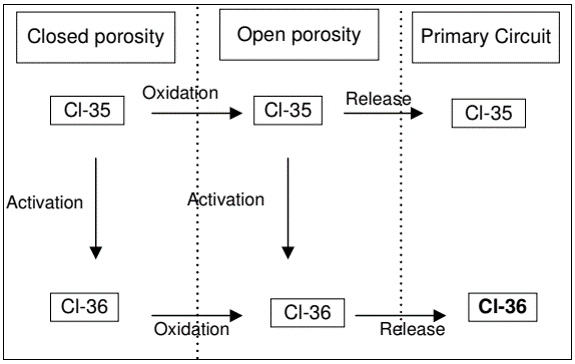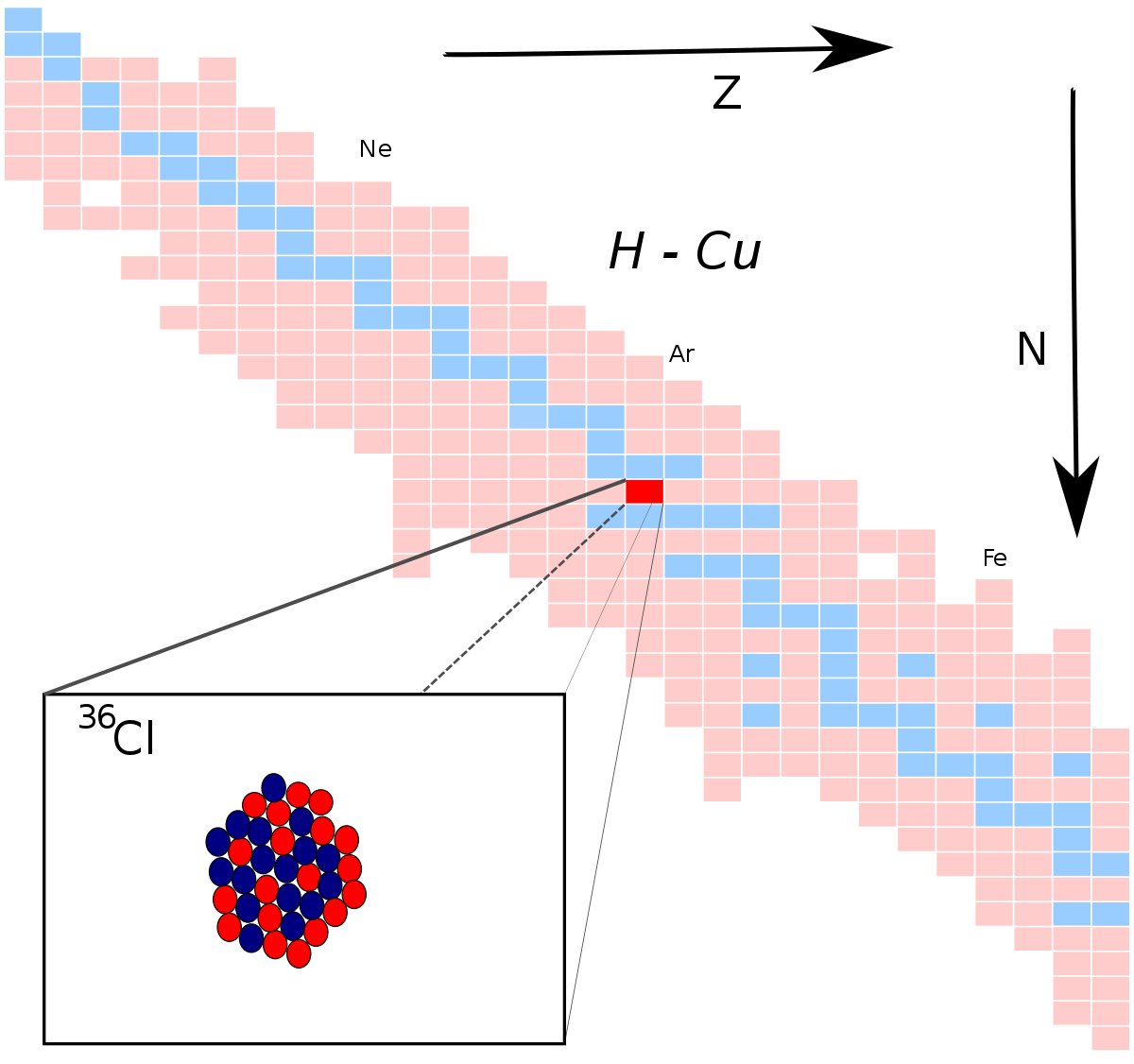Life cycle of chlorine in geochemical environment
Chlorine is involved in the following research areas:
a) dating glacial morphologies and estimating the surface exposure of geomorphological elements such as morainic blocks and the abrasion of paleo-coastlines plateaus;
b) archaeological dating, as it covers a period ranging from 350,000 to 12,000 years, thus extending the ability to date fossil organic materials beyond the 50,000-year interval (14C dating);
c) analysis of speleothems;
d) analysis of gaseous emissions evolution in volcanic environment;
e) quantification of erosion rates based on exposure times: with longer residence times of a mineral or rock near the surface, the concentrations of 36Cl will be higher (Ivy-Ochs and Kober, 2008);
f) neotectonics (Phillips, 2003);
g) groundwater flow (Lehmann et al., 2003) and dating of soil / water interactions (Campbell et al., 2003);
h) solar radiation (Muscheler et al., 2007);
i) risks from radio exposure (36Cl).
As chlorine is a highly mobile element, it can be mobilised by "watering" due to its high solubility and be rapidly introduced into the hydrosphere and biosphere cycles. The release of 36Cl from radioactive waste (RW) deposits must therefore be taken into consideration to develop effective safety strategies and to assess the risks and safety conditions of RW repository.
Moreover in case of nuclear accidents, 36Cl makes it possible to assess the risks of exposure to the assimilation of radionuclides thanks to the estimation of residence times (Limer et al., 2009). Although 36Cl levels are typically low, the high concentration in some plants (Kashparov et al., 2007) provides information on the life cycle of chlorine in soils and sediment layers, including its bioavailability.

The knowledge of the 36Cl cycle and its geochemistry, is useful for monitoring and protection of environmental matrices and for the evaluation of climatic and anthropic impacts in erosive processes.
Within the framework of EURATOM project CHANCE, in which ENEA is a partner, methods for collection of chlorine gas emanation from irradiated graphite and for 36Cl detection by means of laser techniques are under developing.
This report is based on the CHANCE project https://www.chance-h2020.eu/
Alberto Ubaldini
ENEA
alberto.ubaldini@enea.it
Chiara Telloli
ENEA
chiara.telloli@enea.it
